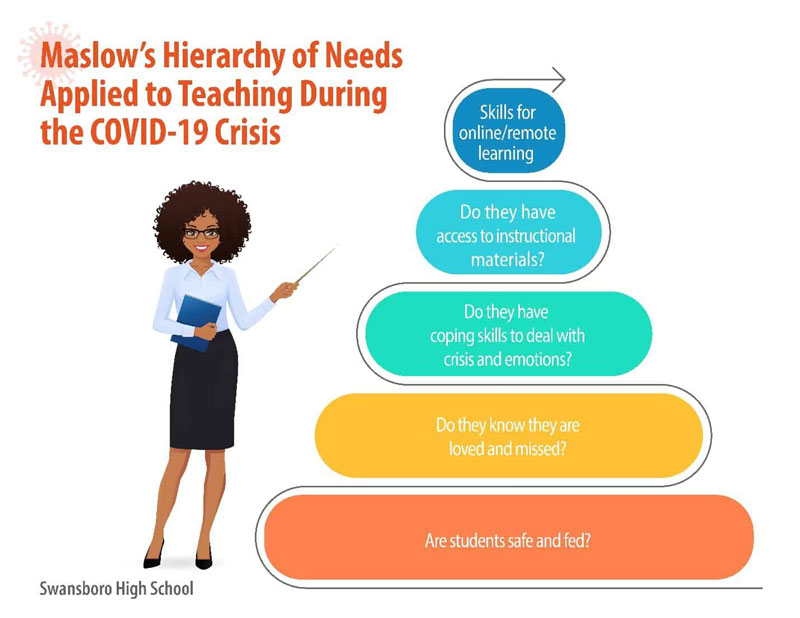Every year, teachers interact with students who walk into their classrooms with different personal experiences and academic backgrounds. Teachers know in advance that they will need to differentiate and provide multiple pathways so that all students can increase their learning and access grade-level standards. In the fall of 2020, learning may take place in a very restricted face-to-face environment, be completely virtual, or encompass both in a blended-learning model.
Students will also start school after long school closures. During those closures, students experienced uneven instruction and academic growth. Some students were able to continue, and even accelerate, their learning, while other students had no access at all. Students will come back with academic gaps that may be wider than ever before. In addition, students will likely have increased social and emotional health needs.
The good news is that teachers know how to care for their students, differentiate, assess students, and use assessment data to drive instruction. Teachers can take their experience as well as their expertise and transfer, develop, and apply their skills to their current landscape for the 2020–2021 school year. Teachers will need to design with change in mind, knowing that they could be in a face-to-face, virtual, or blended-learning environment at any point during the school year.
5 Strategies for Addressing Academic Gaps
1. Establish a safe and supportive environment.
Put a focus on relationships above everything else. If a student does not have their basic needs met, they will not be able to thrive academically. Students need to feel safe and cared about and be taught skills to deal with crises and their emotions before they will be able to access academic content and improve their academic skills.
- Here are several AVID Open Access resources to help you establish a safe and supportive environment. These resources can also support students who are in a face-to-face classroom. Teachers will still be utilizing technology to engage students and improve their learning, especially while they are sitting six feet apart, unable to share materials and supplies, probably wearing a mask, and facing forward.

2. Create and conduct relevant and low-stakes formative assessments.
The best way to know what students know and need to know is through formative assessment. Larger diagnostic tests may be used to assess academic gaps, but those tests will not be very helpful this school year in informing teachers of what their students know about a specific topic, standard, or curriculum and what misconceptions their students may have or in identifying barriers to student learning. Formative assessment can help do all of these. Formative assessment can be done very quickly, be different for different students, be independent or collaborative, and be given throughout a lesson (not just as an exit ticket). Formative assessments should be linked to standards and/or objectives and should collect evidence of student learning. Teachers should analyze the evidence of student learning and then respond to the evidence in order to improve student learning.
- When planning with change in mind, and if students have digital access, you might consider making many of your formative assessments digital.
- Creating digital formative assessments will allow students in face-to-face, virtual, or blended-learning environments to engage, and they will likely not have to be changed or revised for every environment.
- Digital formative assessments can allow for faster analysis of student misconceptions, and information can be more easily shared with others.
- AVID Open Access resources to help you plan and create formative assessments and provide feedback to students are noted below:
3. Collaborate with colleagues, other educators, students, and families.
This school year, it will likely be more important than any year prior that you collaborate with your colleagues, other educators, students, and families. The landscape of education has never changed so fast, and you will not be able to keep up with the changes, take care of your own social and emotional well-being, and care for your students’ emotional and academic well-being all on your own.
- Make an effort to connect with your students’ teachers from the previous year. They will be able to clarify what content was not covered due to school closure and remote learning. They will also be able to give insight into your students. This will be very important because it is possible you may not meet your students in-person for many weeks or months.
- Work collaboratively with your professional learning community (PLC) to create relevant formative assessments for your students, gather and review data from the assessments, and use the data to inform your instruction.
- Collaborate with other staff members, colleagues, or an even larger professional learning network to gain insights, support, and encouragement.
- Collaborate with students and families to create classroom community and to gather feedback and ideas on how to improve student learning in your classroom.
4. Differentiate instruction.
Differentiating instruction is not something that is new to teachers; however, differentiating instruction using technology, while perhaps teaching face-to-face, virtually, and/or in a blended-learning model, is most likely new for many teachers. It is important to remember that there are many ways to differentiate. Below are a few ideas:
- Empower students with voice and choice. Give students a say in how they learn and how they demonstrate their learning.
- Provide inquiry-based learning opportunities.
- What Is Inquiry-Based Learning (and How Is It Effective)? (GradePower Learning)
- Be sure to differentiate for students needing accommodations.
- Provide multiple opportunities for students to develop and demonstrate their understanding.
5. Take care of yourself.
During the unprecedented 2020–2021 school year, remember to take care of yourself. If you don’t take care of your own social, emotional, and physical needs, then you won’t be able to care for others, and you will be much more likely to burn out before the year is over. Below are some resources that may help you with self-care:
